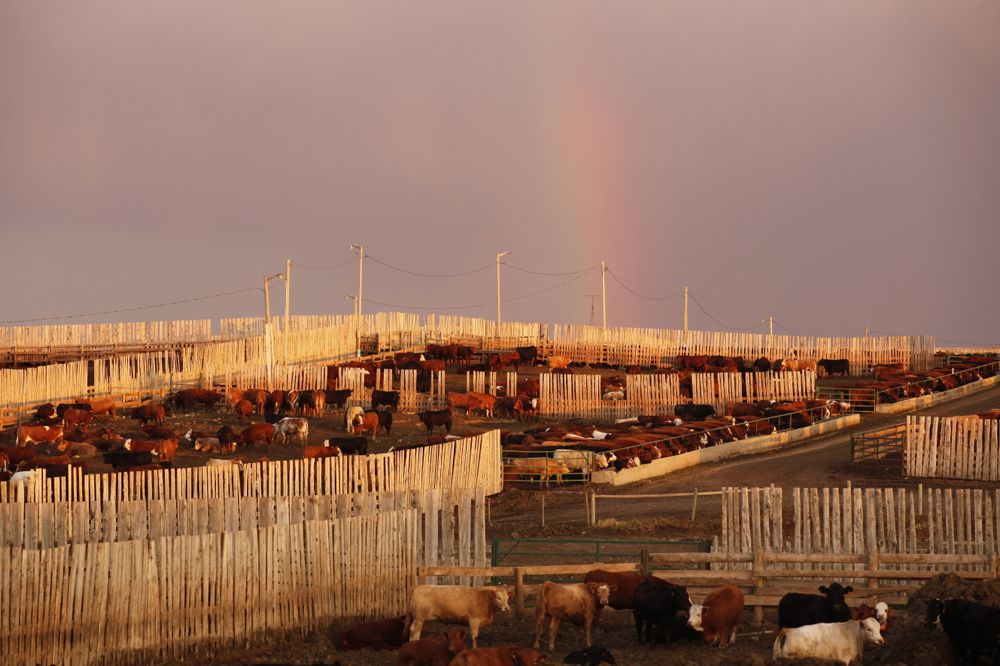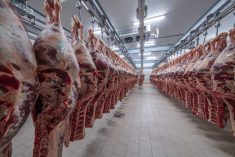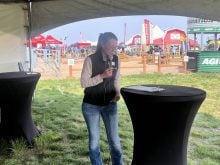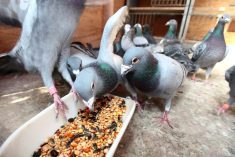Prairie cattle producers whose herds are stuck under federal quarantine while officials trace out cases of bovine tuberculosis (TB) could soon have a option to house animals at an approved feedlot.
The Canadian Food Inspection Agency on Friday said it is working with beef cattle industry representatives to find one or more feedlots where it can send quarantined animals whose owners don’t have capacity to overwinter them.
Over 22,000 cattle across “over 35” premises — mainly in southeastern Alberta with “about four” in southwestern Saskatchewan — are now under quarantine and can’t be moved without CFIA permission, the agency said.
Read Also

Ample supplies and improved livestock sector to boost Canadian feed sector: FCC
Abundant feed grain supplies and improved profitability for the livestock sector should support strong feed demand and sales through the winter, says a new report from Farm Credit Canada.
As of Friday, testing has turned up six TB-positive cattle, all belonging to the index herd which was home to the first of those six — a southeastern Alberta cow that tested positive at a U.S. packing plant in September.
According to Dr. Jaspinder Komal, executive director of CFIA’s Animal Health Directorate, the scope of that infected herd has now expanded to six premises, all with the same operator.
“Nearly all” adult animals from the index herd have now been tested and “removal and humane destruction” of the herd continues, CFIA said Friday.
For producers whose herds remain under quarantine, Komal said, a feedlot option with “appropriate biosecurity measures” could soon be in place, once CFIA and industry officials have identified an available lot “or a number of lots.”
A spokesperson for Agriculture and Agri-Food Canada, on a CFIA conference call Friday, said those feeding costs and other compensation for quarantined farms are being considered through the AgriRecovery assistance process.
AgriRecovery, cost-shared 60/40 by the federal and provincial governments, is part of the business risk management (BRM) suite under the Growing Forward 2 ag policy funding framework, and is meant to help cover “extraordinary costs” producers incur in response to a one-off disaster.
Before any AgriRecovery initiative is put in place, the federal and affected provincial governments must undertake a “joint assessment” to see whether further assistance is needed to help producers deal with costs not covered by other BRM programs.
According to Alberta’s Agriculture Financial Services Corp. (AFSC), the province has already begun the “longer-term analysis of whether future AgriRecovery assistance may be available to producers” affected by the bovine TB outbreak.
AFSC listed other options available to producers in the meantime, including the Advance Payment Program and AgriStability interim payments, as well as loans under the Feeder Association Loan Guarantee Program. CFIA quarantines don’t affect eligibility for those loans, AFSC said.
As for the animals in the index herd that have yet to be destroyed, Komal also said Friday CFIA is working with the industry toward arrangements with beef processors, which would allow those cattle to be euthanized at packing plants and destroyed by way of rendering.
CFIA has recognized some challenges in communicating with producers affected by the outbreak and quarantines, he added, and is working to ensure each affected producer is assigned a “dedicated contact” within CFIA. — AGCanada.com Network
















